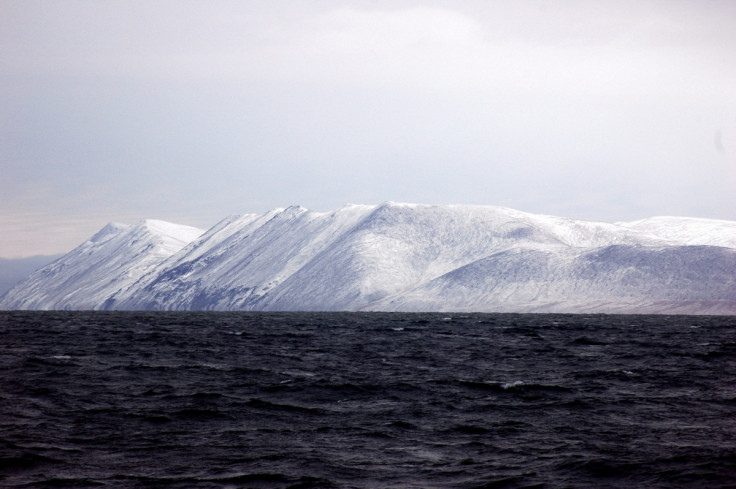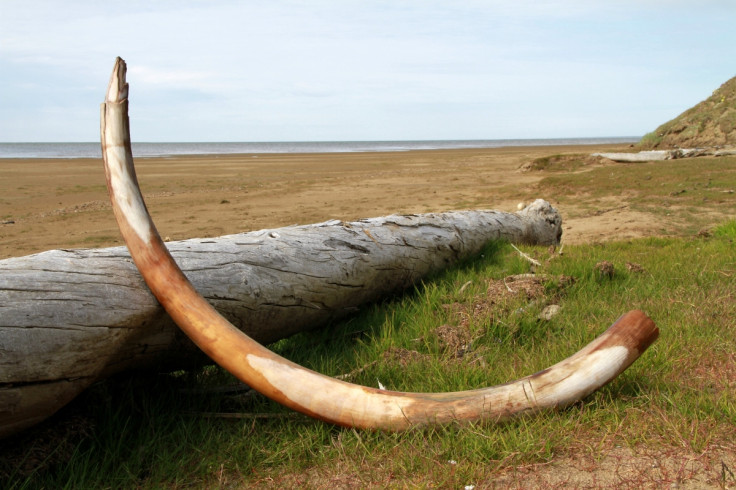Woolly mammoth genetics: Wrangel Island isolation and inbreeding doomed species to extinction

Woolly mammoth inbreeding after being stranded on Wrangel Island in the Arctic Ocean led them to develop a weakened immune system, researchers have discovered. This find adds further weight to the argument that the mammoths became extinct because the island was just too small to sustain them, experts have said.
The last-known mammoth populations became extinct around 4,000 years ago. They had become isolated on Wrangel Island in the Arctic Ocean 6,000 years earlier. The warming climate had caused sea levels to rise, cutting them off from the mainland. During this period of isolation, the population is believed to have fallen from around tens of thousands, to just 1,000 individuals.
What finally pushed the species to extinction is not known, however. Analysis of mammoth specimens is slowly revealing the stranding and dwindling numbers resulted in inbreeding.
Love Dalén, professor at the Swedish Museum of Natural History in Stockholm, and colleagues were looking at genetic diversity in an important immunity gene. The major histocompatibility complex – or MHC – is involved in the recognition of pathogens and the initiation of immune response.
Published in the journal Scientific Reports, the researchers compared the genetic variation of this gene in woolly mammoth samples before and after the Wrangel Island stranding. Their findings showed post-isolation mammoths had lost genetic diversity in the gene, potentially making them more susceptible to disease. Love said the finding indicates inbreeding among decreased mammoth populations meant natural selection was "no longer powerful enough to maintain diversity".
Speaking to IBTimes UK, Dalén said: "In the ancestral population [pre-isolation] there was virtually no inbreeding all, but that was probably so large that natural selection was operating efficiently in keeping diversity up."

He said the research does not indicate what sort of diseases mammoths might have suffered from, nor can they say for certain if their weakened immunity made them get sick. "It's more that it's interesting that selection wasn't strong enough to maintain diversity in the MHC," he said, pointing out that you often see greater diversity in small populations. "We don't really see that in the mammoth. That suggests inbreeding probably had a fairly strong effect in reducing this diversity in the face of selection."
Dalénn and colleagues are currently trying to establish what pushed mammoths to extinction: "We have no idea what happened on Wrangel Island," he said. "That's what we want to find out. Were they effectively doomed because the island was too small? I think they were, but we don't have any evidence showing this.
"All the numbers we have seem to suggest that islands might simply have been too small to maintain a mammoth population for as long as 10-15 thousand years, which would have been required for them still to be there today. The evidence is slowly mounting that this island might have been too small. We have nothing concrete towards that, but we're hoping to get there in the end."

They are now working on more samples to try to establish when inbreeding started. "We know it started at some point, but we don't know if it started immediately after Wrangel Island was isolated, or if there a bottleneck at some point during that time," Dalén said.
Furthermore, researchers say their current findings could have implications for current endangered species being threatened with disease and climate change. "We know variation in the MRC is important for conservation. When you have a population that becomes very small over a long time, you get this long term inbreeding that – at least in the mammoths – appears to have depleted variation in the MHC. That's a lesson to be drawn from the future is that species that are endangered today."
He said conservationists should be aware that small population sizes may result in diversity in immune-related genes, which could impact their ability to adapt to changes to the environment: "It's another piece in the vast sea of evidence that suggests it's not a good idea to have populations in a very small size. It's imperative for endangered species that we keep their population size up."
© Copyright IBTimes 2025. All rights reserved.






















